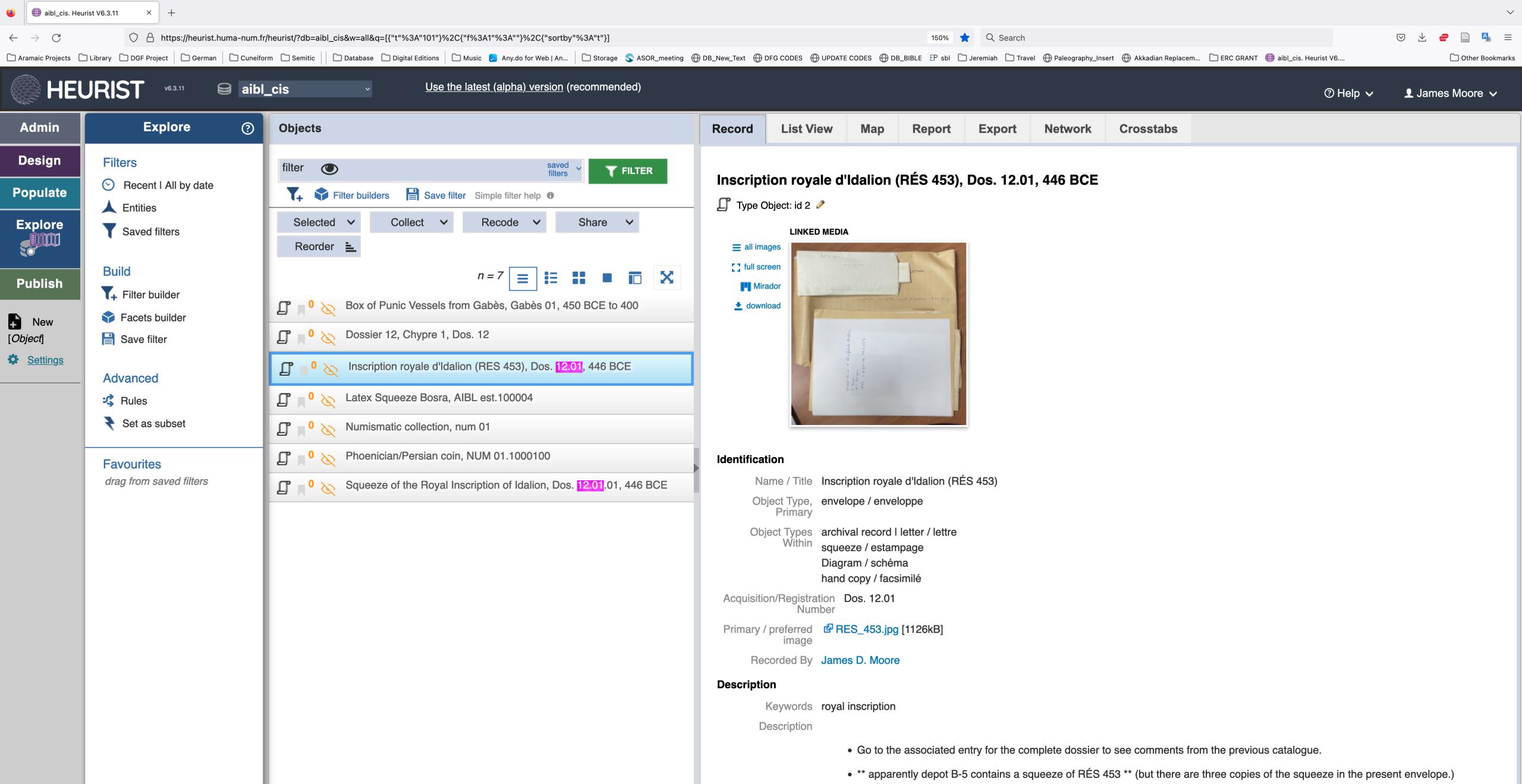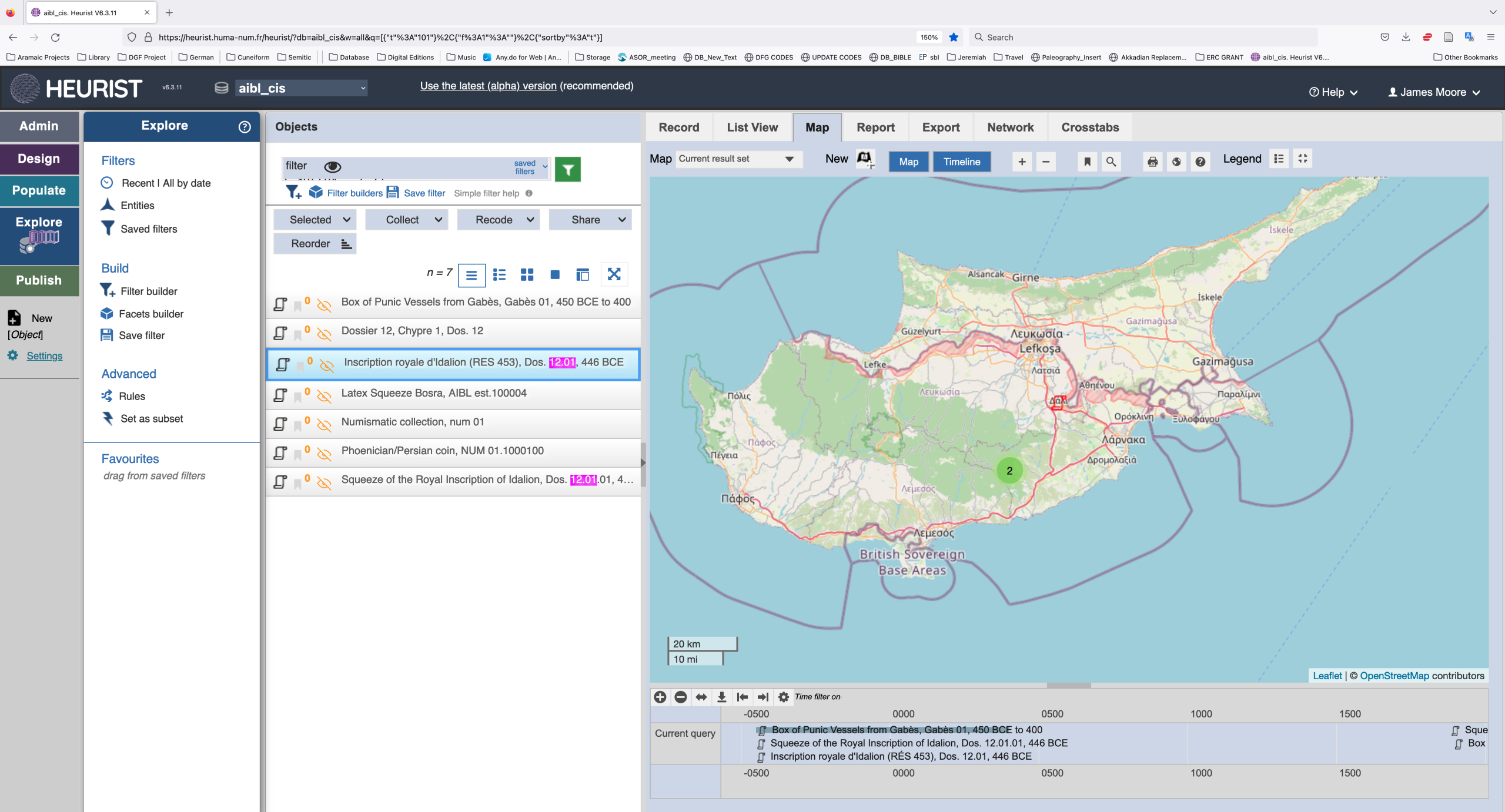
2022 Study of Collections Fellowship Report: Imprints of the Past: Preserving the Largest Known and Uncatalogued Collection of Semitic Artifacts in Europe
James D. Moore, Humboldt Universität zu Berlin
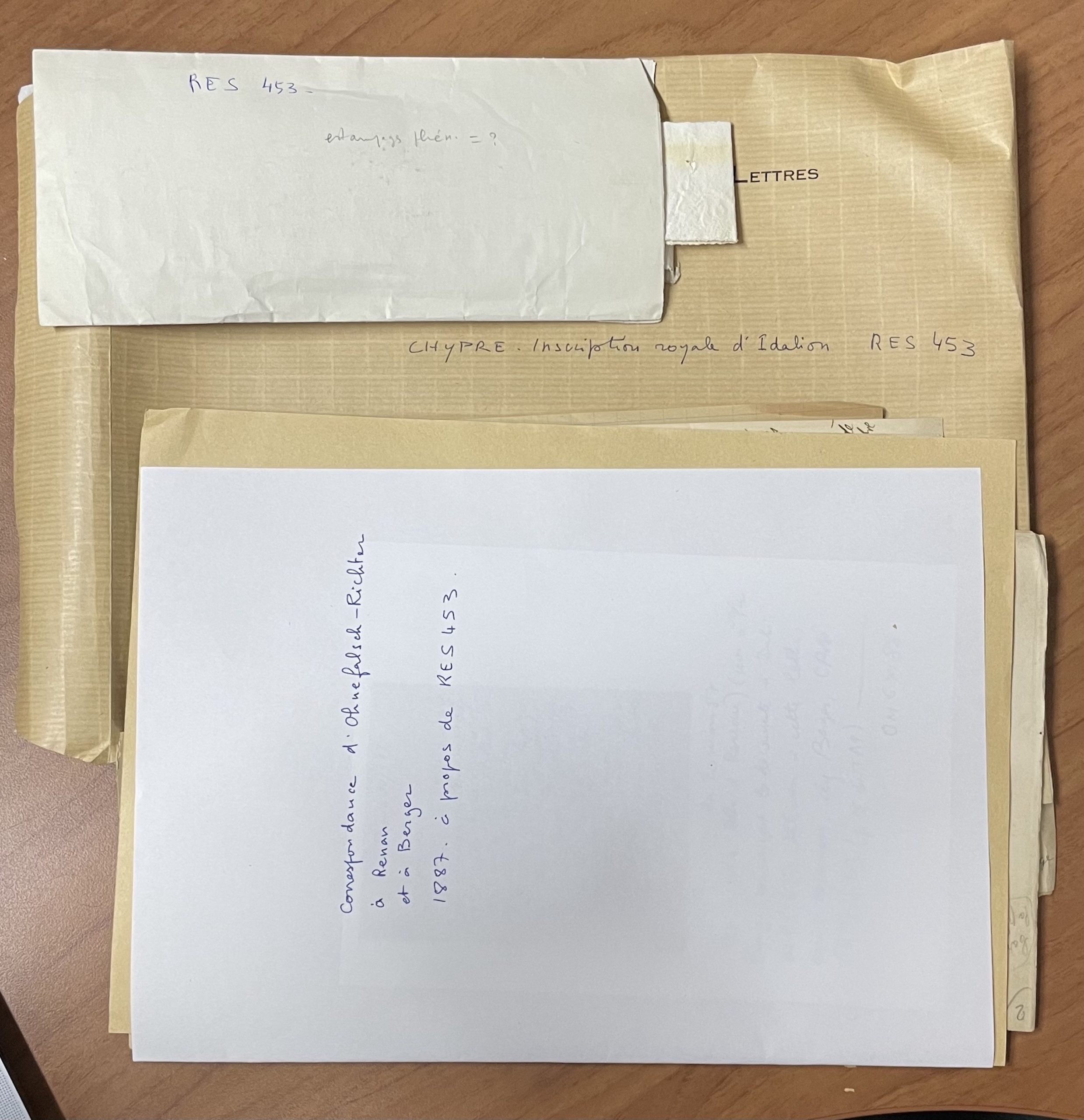
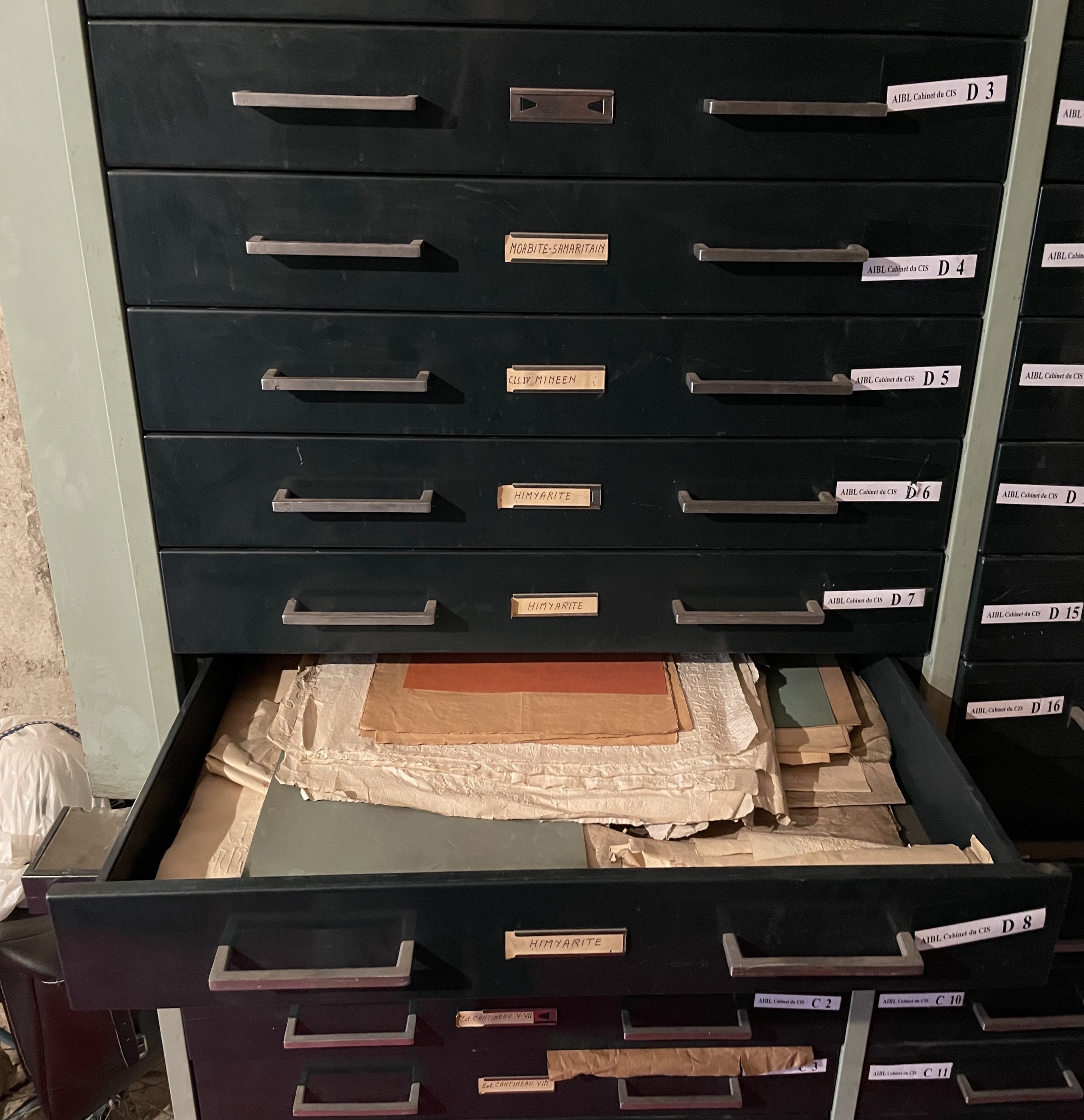
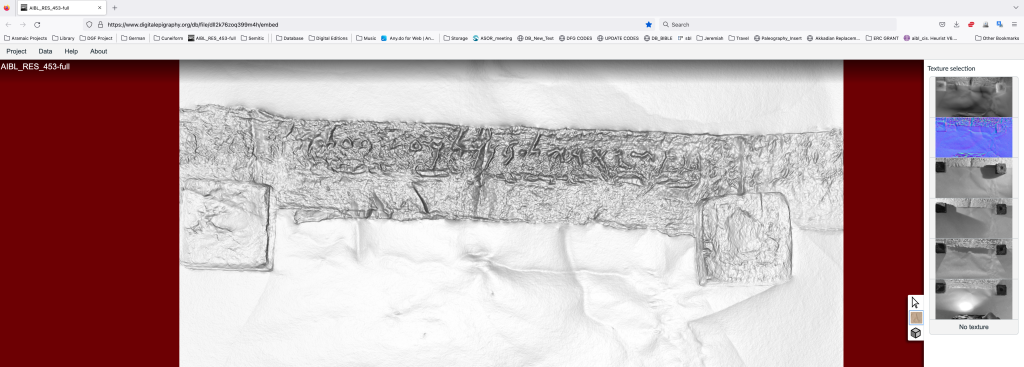
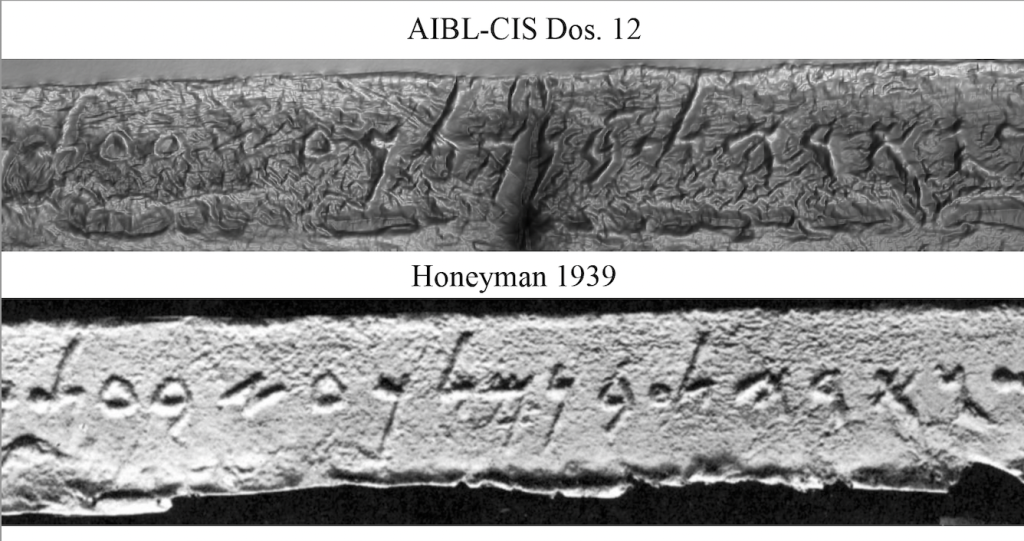
The Cabinet-CIS’s Heurist database and Digital Epigraphy software has far reaching applications for the collection. While one of Maria Gorea’s students, Noémie Carpentier, was working on the Cabinet-CIS’s numismatic collection, I trained her in how to use the software to produce 3D renderings of coins. We scanned the following example of a worn Phoenician (Tyrian) coin minted during the reign of Artaxerxes III (AIBL-CIS NUM 01.1000100), and the 3D rendering makes visible the coin’s features, which are invisible to the eye. You can view the coin using the Digital Epigraphy user interface here:
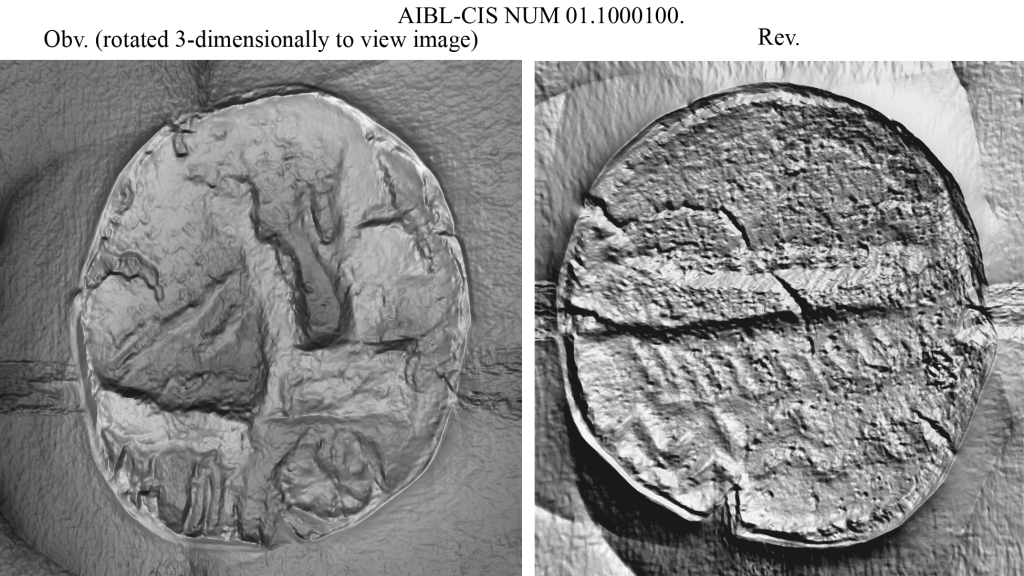
The consorted efforts of all those mentioned above and the support from ASOR allowed us to achieve our objective of building a digital infrastructure for the Cabinet-CIS with which the digital preservation of its invaluable collection can begin.
Additional Notes
The long days spent at the Cabinet-CIS also afforded me opportunities to further my own research. Maria Gorea and I have long teamed up to publish important manuscripts in the Cabinet-CIS, and we used time to finalize manuscripts for a number of publications on two new Phoenician papyri accounts which radiocarbon date to the Persian period, fragments of Aramaic papyri from Elephantine, and a new Aramaic religious text from Egypt radiocarbon dated between the 2nd and early 4th centuries CE.
- “AIBL-CIS de Ricci no. 2: A New Jewish and Aramaic Religious Text from Egypt Dating between the 2nd and Early 4th Centuries CE” Dead Sea Discoveries, forthcoming
- “New Persian Period Phoenician Papyri Accounts from Egypt in the Académie des Inscriptions et Belles-Lettres, Cabinet du Corpus Inscriptionum Semiticarum,” in Advances in Elephantine and Persian Period Research, eds. J. Moore and P. Schmidtkunz, Studies on Elephantine (forthcoming).
- “Radiocarbon Dating an Aramaic Papyrus from Elephantine and a New Aramaic Fragment from the Académie des Inscriptions et Belles-Lettres, Cabinet du Corpus Inscriptionum Semiticarum,” in Advances in Elephantine and Persian Period Research, eds. J. Moore and P. Schmidtkunz, Studies on Elephantine (forthcoming).
- “Papyri semitiques du Cabinet du CIS,” Comptes rendus des séances de l’Académie des Inscriptions et Belles-Lettres, Communication of the AIBL 16 April 2021.
- J.D. Moore, New Aramaic Papyri from Elephantine in Berlin, Studies on Elephantine 1 (Leiden: Brill), 2022; Open Access: https://brill.com/view/title/61396. (pp. 16–17)
